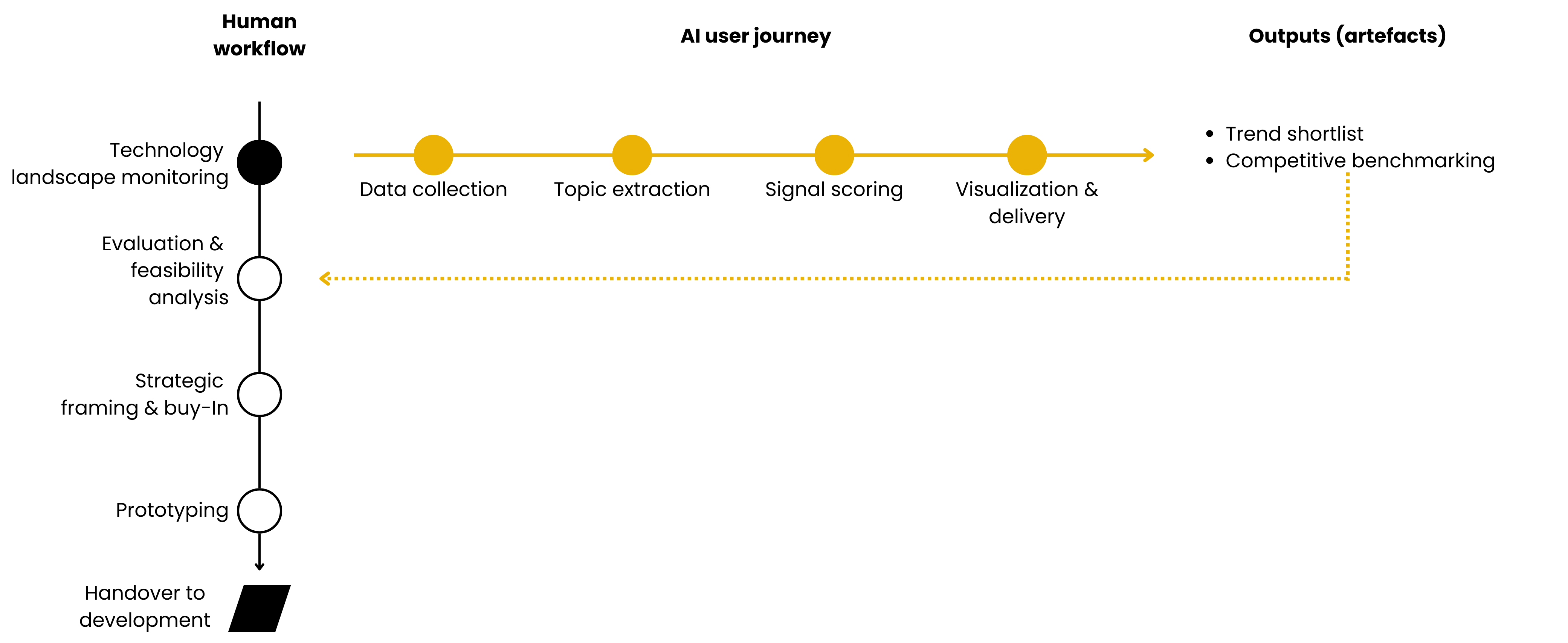AI Integration Map
!! important for building initial user acceptance and trust -> last thing you want to do is to disrupt their existing workflows. The AI Integration Map is a mental model for designing AI functionality that supports — rather than interrupts — the way people already work. It helps product teams align AI capabilities with actual workflows, identifying where automation or augmentation can provide value with minimal friction. The model emphasizes seamless fit: meeting users where they are, delivering insights in familiar formats, and building trust through relevance.

Principles
Start from the human process, not the AI capabilities
Avoid adding friction — integrate into existing artifacts and rituals
Target moments where AI can offer clear, trusted leverage
Design for value delivery, not control
Let user context dictate format, granularity, and interaction
Implementation steps
1Map the human workflow
Break down the existing process into stages, artifacts, handoffs, and pain points. Talk to users to understand their real-world routines.
2Identify high-leverage points
Look for repetitive tasks, data-heavy moments, or bottlenecks where AI can augment human ability or automate low-value work.
3Design a tailored AI journey
Build an AI process that overlays the human journey. Consider where users want insight, automation, or collaboration — and how trust will be maintained.
4Deliver outputs in trusted formats
Integrate into tools and formats users already rely on. Don't force new habits where not needed — meet users where they already work.
5Test fit and reduce friction
Pilot early, monitor usage friction, and co-design with users. If anything feels disruptive or awkward, redesign it around the user, not the model.
Anti-patterns
Feature drop-in: Adding AI features without mapping them to specific user tasks or workflows, leading to confusion or underuse.
Workflow disruption: Forcing users to switch tools, formats, or habits instead of integrating into existing environments.
Format mismatch: Delivering AI outputs in unfamiliar or inconvenient formats, reducing trust and usability.
Over-automation: Trying to replace entire workflows instead of supporting key moments, causing user resistance.
Resources
- Mapping AI into Real Workflows(Article)
- Human-Centered AI Design(Framework)
- Design Patterns for AI Integration(Template)